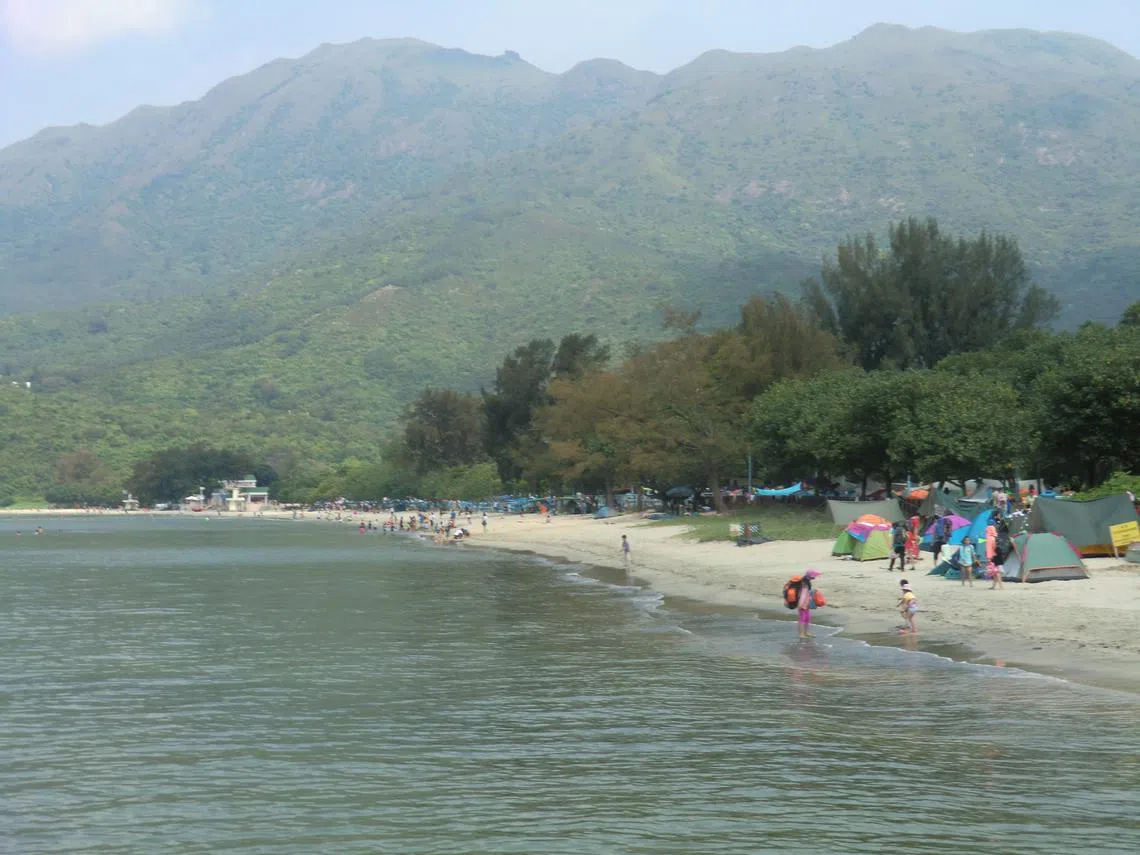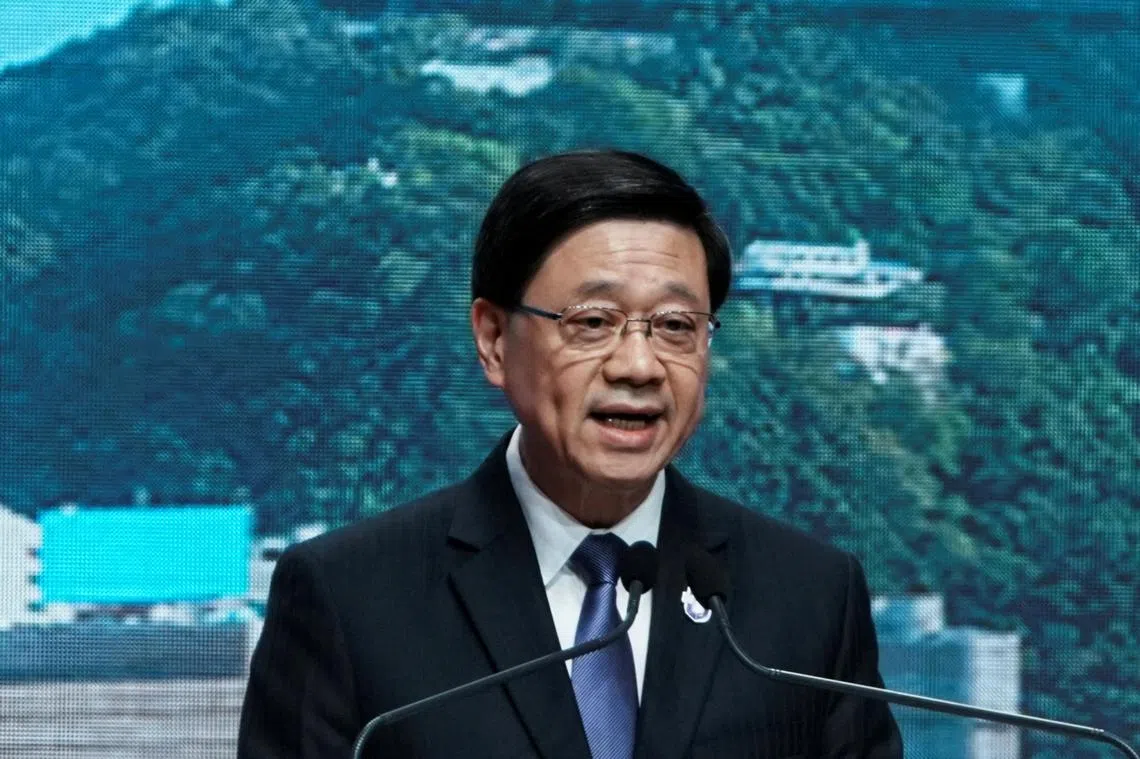Desperate for tourists, Hong Kong doles out incentives to woo visitors from mainland and beyond
Measures include free or discounted public transport, free admission to museums and art spaces, and half-price movie tickets
[HONG KONG] A nearly 1 km stretch of black sand beach on Lantau Island – which is roughly a 30-minute drive from the only bridge that links Hong Kong with mainland China – has become a hot spot for a growing throng of Chinese visitors.
The return of these tourists from the mainland – and other places – is crucial to Hong Kong’s ongoing efforts to jumpstart its economy.
Latest data show that many foreign tourists from other parts of the world have yet to return to anywhere close to the levels before the pandemic struck.
If anything, the cross-border traffic is heading out of Hong Kong. In the last couple of years since China reopened its borders after the pandemic, scores of Hong Kong residents frequently headed across the border to neighbouring cities such as Shenzhen, where it is much cheaper to shop and eat.
But during the recent Golden Week national holiday from Oct 1-7, a wave of mainland Chinese tourists surged into Lantau. The city had been busy courting them to boost the local tourism sector – and, by extension, Hong Kong’s sluggish economy.
Besides the beach, Lantau is also the site of the Hong Kong Disneyland theme park, cable cars, numerous shopping outlets and the Hong Kong International Airport.

In recent months, groups of travellers from across the border arrived on buses, crossing the island’s steep hills to arrive at the Pui O beach campsite, where it is common to see wild water buffalo roam freely.
During Golden Week, staff from the campsite counted some 100 tents that were spread out across the beach. Users of the popular Chinese social media app, Xiaohongshu (or Little Red Book), described it as the “ultimate five-star camping experience”, especially after the site was recently spruced up with new shower and camping facilities.
Incentives galore
Hong Kong’s government has been busy doling out incentives to lure Chinese tourists back to Hong Kong. These include free or discounted public transport, free admission to museums and art spaces, and half-price movie tickets. The government has also set aside HK$10 million (S$1.7 million) in rewards for tourists who use the Alibaba app, Amap, to tour the city.
The initiatives have produced some encouraging results. During Golden Week, 1.2 million mainland tourists set foot in Hong Kong – representing 88 per cent of total arrivals. Hotel occupancy rates during the first four days of the week hit 90 per cent.
Hong Kong Financial Secretary Paul Chan said the daily average number of visitors in the third quarter of 2024 reached 124,300, or about 70 per cent of the comparable period in 2018.
He added that the average daily number of mainland tourists during this year’s Golden Week was 173,800 – which is 80 per cent of the 2018 levels and a 27 per cent increase from last year. In the first nine months of this year, there were 32.6 million visitors to Hong Kong – a year-on-year increase of about 40 per cent, indicated the latest figures from the Hong Kong Tourism Board.
Although the tourism sector is flickering back to life, other economic data still worry the city’s officials as they try to figure out new and different ways to boost growth. Retail sales in August fell 10.1 per cent compared to last year, and were down by 7.7 per cent in the first months of 2024 compared with the same period a year ago.
Overall, Hong Kong’s economy expanded in the first six months within the official forecast range of 2.5 to 3.5 per cent, largely due to strong exports that have compensated somewhat for weaker consumption. However, observers noted that China’s ongoing slowdown and the uncertain geopolitical environment mean that Hong Kong’s growth outlook remains uncertain.
Measures to boost spending
On Oct 16, nine days after Golden Week, Hong Kong Chief Executive John Lee delivered his annual policy address where he announced a fresh set of measures to boost spending.
Among them was the move to lower the amount of tax levied on spirits to help the struggling food and beverage, services and retail industries. The duty for liquor with an import price of more than HK$200 is now just 10 per cent, from 100 per cent previously, with the lower rate applicable to the excess amount.

Lee’s speech was also notable for indicating how Hong Kong’s government also wants to attract more tourists from beyond the mainland, especially from the Middle East and South-east Asia.
To cater to Muslim tourists, Lee said, the airport will soon display information and signs in Arabic. Taxi operators have also been encouraged to provide fleet service information in Arabic. The authorities will also promote restaurants that serve halal food.
Lee said that these initiatives and others were crafted with a view to “develop Hong Kong into a premier tourism destination”.
On its part, the Hong Kong Tourism Board has been busy packing the calendar with all sorts of events to lure visitors, both domestically and from abroad.
In October, thousands of people flocked to a food and wine festival; a major cycling event called the Hong Kong Cyclothon; a professional women’s tennis tournament; and a four-day jazz festival. Later this year, visitors to the Ocean Park theme park will be able to view a pair of giant pandas (named An An and Ke Ke) that were presented by China.
Decoding Asia newsletter: your guide to navigating Asia in a new global order. Sign up here to get Decoding Asia newsletter. Delivered to your inbox. Free.
Copyright SPH Media. All rights reserved.



